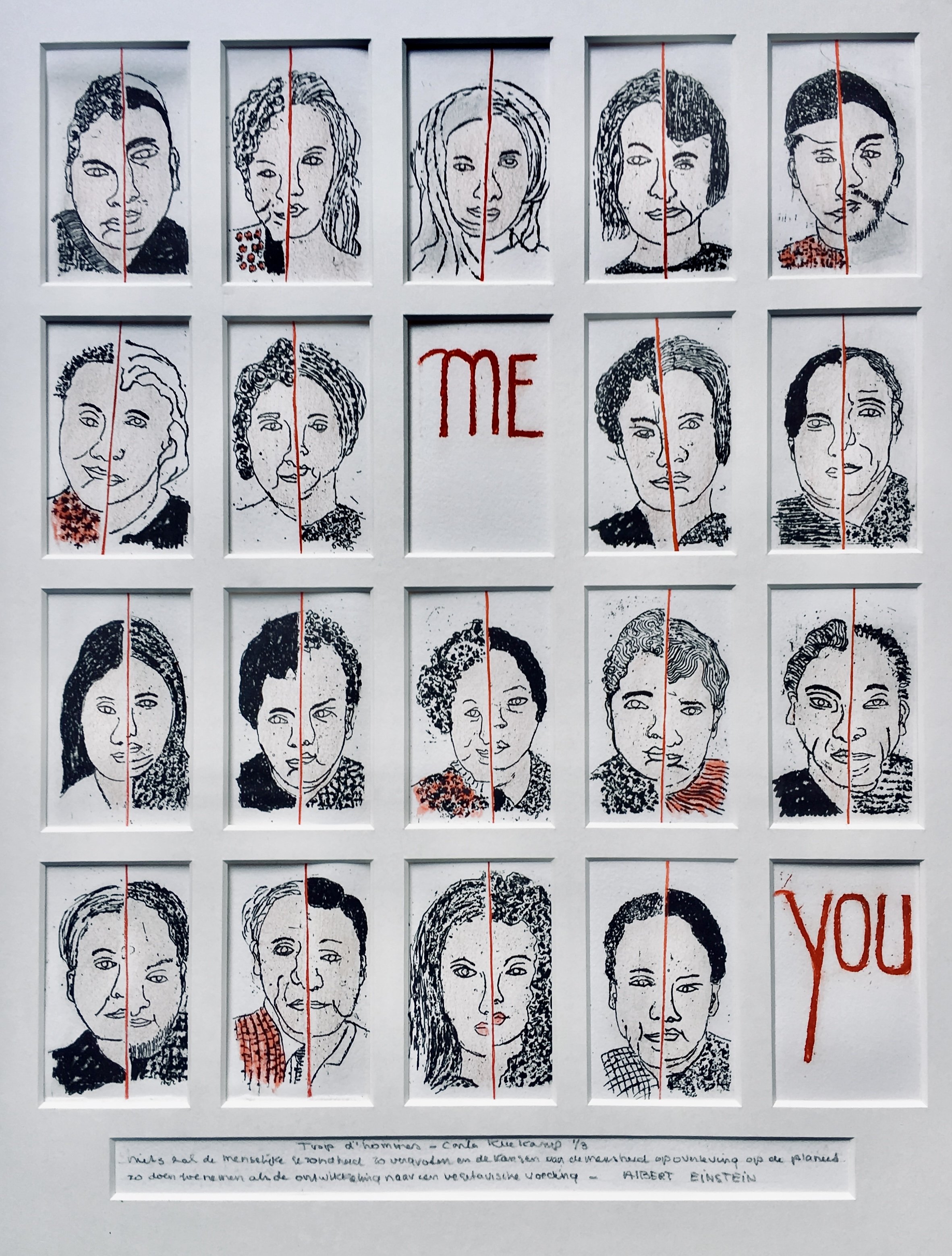Interview with Carla Kleekamp
Your work is a blend of Eastern philosophical depth and Western technical precision. How do you balance the minimalistic ethos of Eastern art with the more expressive demands of Western artistic narratives without compromising the integrity of either tradition?
In the late 1980s, while visiting the Frans Hals Museum in the Netherlands, I stumbled upon a small exhibition of Japanese watercolors near the exit. In that moment, I knew this was exactly what I wanted to learn.
After that, I studied an old Japanese technique called ‘Njimi’ with a Chinese teacher for five years. In the early 1990s, I received a bursary to go to Japan."
Below is a photo of a newspaper article with my Chinese teacher, Lai Fung
In your etching "One of the 20 Dreams of Time," you challenge conventional perceptions of time as linear. How does this reinterpretation of time influence your creative process, and how do you envision your audience engaging with this concept within the static medium of etchings?
This etching represents one of Einstein’s twenty visions of time. Imagine time as a slightly curved circle, where the world repeats itself endlessly and precisely. This etching shows how we have learned nothing from our past mistakes and how we have to go back to the old Time to try again
You have emphasized that "the pure line" remains the most important medium in your work. Could you elaborate on how you cultivate purity in line and what philosophical or emotional truths you aim to unveil through this simplicity?
This is a drawing titled 'Save the Seas,' created with a Japanese pencil on rice paper. I used multiple techniques, including etching, drawing and collage
Your art often reflects on humanity's dual capacity for creation and destruction, particularly concerning nature. How do you see your role as an artist in advocating for environmental issues, and what do you believe art can achieve that other forms of advocacy cannot?
I have been working as a professional visual artist for more than fifty years. From the start, I have been making critical work. My work is an outlet for my awareness that I belong to the most harmful and unnecessary species that inhabits the planet, called the human species.
Having been influenced by both Japanese and Chinese artistic traditions, how do you navigate the cultural nuances of these styles in a way that respects their origins while also making them relevant to contemporary global issues?
This is a drawing callend ‘drones protecting nature' created with a Japanese pencil on rice paper.
Much of your work serves as a critique of the contradictions in human nature. How do you choose which aspects of humanity to highlight in your work, and what process do you follow to ensure these themes are both impactful and comprehensible to your audience?
My answer to this question can be found in the fourth question. I would like to add that I hope my work persuades people to reflect and change their behavior.
How has the mentorship and influence of figures like Aunt Lucie and Jan Godefroy shaped not only your artistic techniques but also your philosophical approach to art? In what ways do you aim to extend or diverge from their teachings in your own work?
When I was a little girl, I wanted to become a ballerina. Aunt Lucie, a painter and my mother’s best friend, and my uncle Jan Godefroy, the director of the Rietveld Academy, always told me I was good at drawing and that I should pursue an art education. Eventually, that’s what I ended up doing
When dealing with complex themes like the "plastic soup" or "fine dust," how do you translate these into visual narratives that are both aesthetically pleasing and emotionally or intellectually stirring?
I have no difficulty realizing my ideas. This is an etching/ aquarelle about the disappearing biodiversity called ‘The Change; Human Interruption’.
You've expressed a desire to use your art to provoke and inspire dialogue around change. Can you share an instance where your art initiated such a dialogue, and what was the outcome?
I had an exhibition in France at the FOL (Fédération des Œuvres Laïques de l'Ardèche). During the opening we had a discussion about the etching I made inspired by ‘the Lugano Report’ by Susan George. In this book, the question posed to a few directors of large companies was: what should we do to leave the Earth in good condition for the next generation? After extensive research, the conclusion was that there are too many people on the planet. This is an etching/aquarelle called ‘Trop d’hommes’
How does your philosophical inquiry into the truth of images and news shape the content and style of your art? In an era of pervasive misinformation, what responsibilities do you believe artists have in shaping public discourse and perception?
I’m certain we are exposed to misinformation as well as a lack of information every day. This etching represents fake news; the first three frames are examples of fake news, but the last one reveals reality. The last frame shows a bird surrounded by plastic and the disappearance of biodiversity.


















